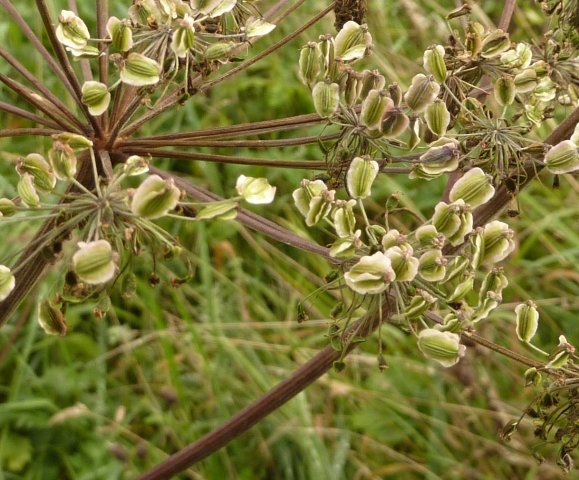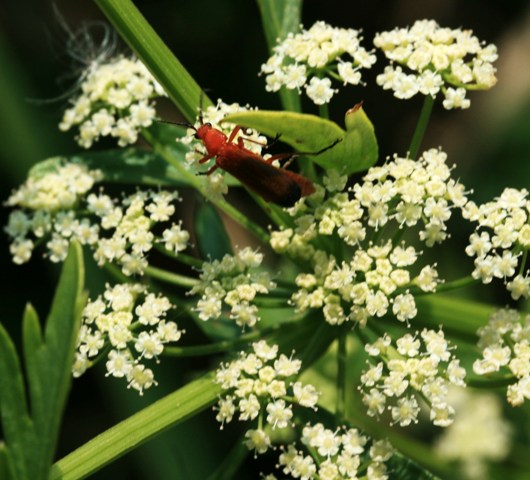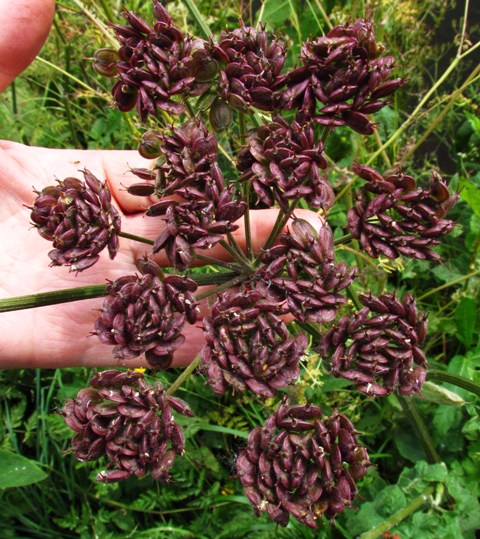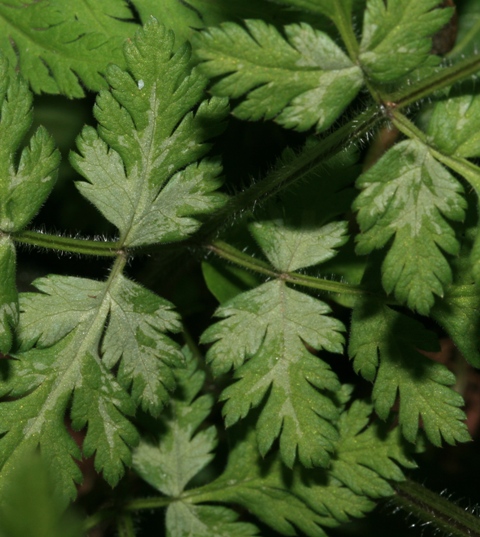In this post we’ll talk mostly about the medicinal uses I found in the family of Umbels or Apiaceae as they are now called.
We introduced this family with a post on the most ‘detested’ member called the Ground Elder which you can find here.
After this came an entire list of our native ones as well as the edible uses of our garden Umbels.

Most of the below information is of the brilliant book by Julian Barker: Medicinal Flora of Britain and Northwestern Europe
Pictures by Matt Summers unless stated in link.
Contents:
Eryngium maritimum or Sea-holly
Scandix pecten-veneris or Shepard’s Needle
Coriandrum sativum or Coriander
Pimpinella saxifraga or Burnet-saxifrage
Crithmum maritimum or Rock Samphire
Oenanthe crocata or Hemlock Water-dropwort
Foeniculum vulgare or Fennel
Conium maculatum or Poison Hemlock
Visnaga daucoides or Toothpick Plant
Apium graveolens or Wild Celery
Petroselinum crispum or Parsley
Carum carvi or Caraway
Ligusticum scoticum or Scots Lovage
Angelica sylvestris or Wild Angelica
A. archangelica or Garden Angelica
Levisticum officinale or Lovage
Imperatoria ostruthium or Masterwort
Peucedanum officinale or Hog’s Fennel, Sulphurweed
Heracleum spondhylium or Hogweed
Daucus carota or Wild Carrot
Myrrhis odorata or Sweet Cicely
Sanicula europaea or Sanicle
information with a pink background in this post means: take care as it is poisonous!
information with a green background tells you about an interesting edible or other use.
Eryngium maritimum or Sea-holly
Uses: Cystitis, urethritis, urinary calculus; renal colic; haematuria. Benign prostatic hypertrophy. Prostatitis.
Scandix pecten-veneris or Shepard’s Needle
This is a salad-herb. Our species is aperitif and stomachic, also said to be aphrodisiac. The upper leaves are used and not the elongated fruit.
Coriandrum sativum or Coriander
Both leaves and fruits are useful against flatulence and colic and may be given to children and babies over 6 months old.
Pimpinella saxifraga or Burnet-saxifrage
Action: Aperitif. Expectorant. Carminative. Antiseptic. Anticatarrhal. Galactagogue. Uses: Sore throat, laryngitis, flatulent dyspepsia. Catarrh associated with upper respiratory tract infections. Said to be useful for asthma. Gargle- internal usage is uncertain so only use small doses for limited period.
Crithmum maritimum or Rock Samphire
good Vitamin C content.
Oenanthe crocata or Hemlock Water-dropwort
This has been used externally for warts and whitlows. Mrs Grieve says it has been taken for eruptive conditions of the skin. It would have to be a serious eruption recalcitrant to other treatment before one would conceive of administering so poisonous a plant!
Oenanthe aquatica or Fine leaved Water-dropwort: poisonous!
Aethusa cynapium or Fool’s Parsley can be mistaken for Garden Parsley but is poisonous
Foeniculum vulgare or Fennel
Action: Aromatic and carminative aperitif and metabolic aid. Diuretic. Galactagogue. Antimicrobial.
Uses: Dyspepsia; flatulent colic in children. Topically: Blepharitis, conjunctivitis (compresses made from strong infusion)
Conium maculatum or Poison Hemlock
“If Hemlock has made the name of Socrates widely known, then the death of Socrates has made the reputation of Hemlock”. Much used in past and not just for poison.
Actions: Analgesic, antineuralgic, antispasmodic; anaphrodisiac.
Visnaga daucoides or Toothpick plant
This non native has been cultivated since earliest times for medicine. More recently, it has been exploited as a drug for use in angina and asthma.
The fruiting pedicels (ie the rays of the umbel) are sold in Egyptian markets as tooth picks. Several others in this genus make good garden plants and cutflowers!

Apium graveolens or Wild Celery
Parts used Fruits, fresh or dried. All other parts should be fresh, or as a specific tincture.
Uses: Rheumatism. Arthritis. Gout. Inflammation of urinary tract.
Petroselinum crispum or Parsley
Action: Diuretic. Emmenagogue. Anti-galactogenic. Antispasmodic. Stomachic: action on digestive tract with high mineral and vitamin content make it anti-anaemic. Antimicrobial. Uses: Dysmenorrhoea. Amenorrhoea. Dysuria. Cystitis. Chronic oedema of metabolic or cardiac origin. Anaemia. Flatulent dyspepsia. Nausea.
Carum carvi or Caraway
Uses: Flatulent dyspepsia. Intestinal colic. Anorexia. Respiratory tract infections; laryngitis (gargle). Said to be useful for painful periods.
Ligusticum scoticum or Scots Lovage
It is a culinary herb which is, on account of its vitamin C content; Antiscorbutic, carminative and diuretic, mostly from the volatile oil which it contains.
Used like Lovage.
Angelica sylvestris or Wild Angelica
The leaves make a reasonable carminative and stomachic drink, the root and fruit are stimulant and antispasmodic.
The pulverised fruits have been used to get rid of and deter nits from the heads of children. The volatile oil content is considerably less than the following species, but that can be an advantage when a gentler remedy is needed, for instance with children.
Angelica archangelica or Garden Angelica
Uses: flatulent dyspepsia associated with hypoacidity. Anorexia nervosa. Bronchial catarrh. Of great value in asthma and some types of migraine. Peripheral vascular disorders. The leaf is carminative and anti-inflammatory and is made into compresses to relieve thoracic pain.
Levisticum officinale or Lovage
Action: Stomachic, carminative and cholagogue. Diuretic. Antidiaphoretic. Mild expectorant. Emmenagogue.
Said to be useful for rheumatism and painful periods. The fruit has been used for migraine.
Caution: not to be taken during pregnancy, nor where there is kidney impairment or disease.
Imperatoria ostruthium or Masterwort
This was a most important medicinal plant in Gerard’s day and was cultivated on some scale. The heyday use of this plant has retired from these parts but it and several others of the 170 species in this genus are used in Central and Eastern Europe and also in Africa and India.
What was it used for? Chronic bronchial catarh. It is also aperitif and stomachic (an aromatic bitter rather similar to Angelica). It was considered useful as an anti-venom, an indication still recognised in Switzerland today.
Peucedanum officinale or Hog’s Fennel, Sulphurweed
Very rare native. One cannot be sure whether this was the peukedanos that Dioscorides valued so highly. The strong sulphurous contents give it expectorant, antispasmodic and diaphoretic properties. Whether it has the claimed antimicrobial activity ascribed to it has not been put to the test in modern times.

Heracleum spondhylium or Hogweed
In eastern European countries and especially Romania, H. sphondylium is used as an aphrodisiac and to treat gynecological and fertility problems and impotence. It is also sometimes recommended for epilepsy. However, there are no clinical studies to prove its efficacy at treating any of these problems.
The stem and leaf hairs are capable of producing a very nasty contact dermatitis with the possibility of subsequent photosensitivity. At its worse, this can lead to permanent purplish discoloration of the skin.
Daucus carota or Wild Carrot
Action: Diuretic. Antilithic. Antirheumatic. Carminative. Uses: Gout. Polymyalgia rheumatic (in combination with a number of other remedies). Urinary gravel. Cystitis.
Cultivated Carrot:
The fleshy root of the cultivated carrot is a well-known and highly nutritious food. It is also, but only if taken raw daily, a gentle remedy for threadworms in children. The leaves of the carrot contain porphoryns which tend to stimulate pituitary release of the gonadatrophic hormones. The culyivated plant subsp. Sativus has been known for 2000 years and is derived from a Mediterranean ancestor and not from the native plant.
Orinally it contained anthocyanin pigments which made it the colour of beetroot. The colour was bred out in Holland in the 17th and 18th centuries. Wide medicinal uses are claimed but, in practice, it is employed as a remedy for a number of urinary conditions and for gout, for which it often does well with Celery seed.
Myrrhis odorata or Sweet Cicely
This is a herbal tonic that restores energy, lifts the spirits and settles the digestion.

The fruits make tasty snacks!
The fruits or leaves and stems can be made into an aperitif against poor appetite, weak digestion, flatulence and indigestion. It is a good remedy for older people who have lost their enthusiasm for life, as it lifts the spirits and enkindles the digestive fire. It enables them to enjoy their food with good appetite, warming the digestion and improving absorption of nutrients. This plant is also beneficial for anyone who is weak or exhausted, perhaps after a chronic illness or caring for someone else. It will help them get back their energy and ‘joie de vivre‘ slowly rebuilding their strength and gently warming the whole system.
Sanicula europaea or Sanicle
The name comes from the Latin ‘to heal’ and ‘healthy’. It was a plant valued by the School of Salerno and throughout the Middle Ages and beyond.
Uses: Gastro-enteritis, especially with suspected ulceration or occoult bleeding. Flatulence. Diarrhoea. Respiratory and urinary infections. Leucorrhoea. Metritis and menorrhagia (In the past was fed to cows after calving to aid expulsion of afterbirth and to stop bleeding) Externally: for healing varicose and other ulcers, haemorrhoids, bruises, chilblains, skin rashes. As a mouthwash for sore gums, etc. or sore throat (gargle)
